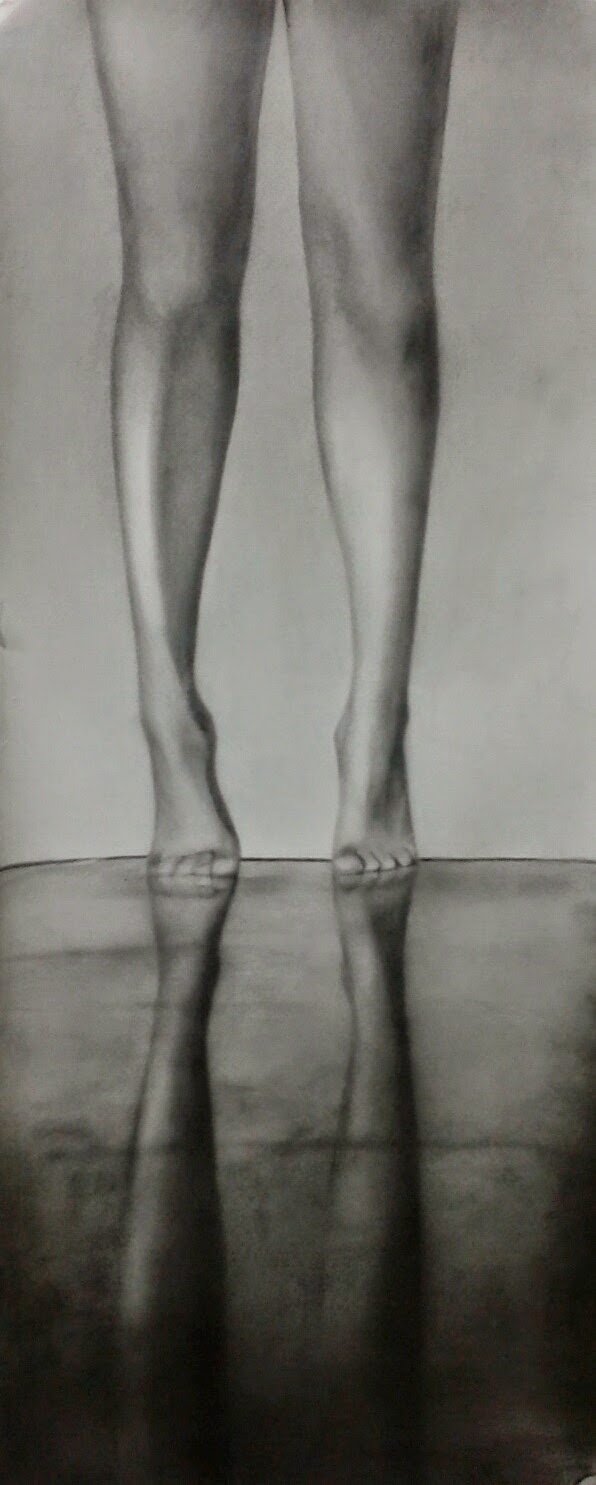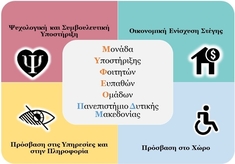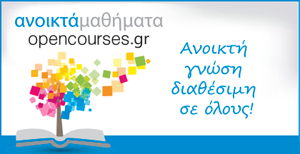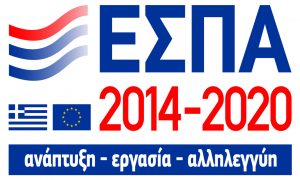Η Ειρήνη Πουλιάση ,γεννήθηκε στην Αθήνα το 1989,το 2004 ξεκίνησε τις σπουδές της πάνω στη ζωγραφική στο εργαστήριο του Μιχάλη Βελούδιου που αργότερα διετέλεσε και ως βοηθός του. Το 2008 συνέχισε τις σπουδές της πάνω στις εικαστικές τέχνες στον όμιλο ΑΚΤΟ και το 2010 εισήχθη στην Σχολή Καλών Τεχνών Φλώρινας όπου μέχρι και σήμερα είναι φοιτήτρια του 3ου εικαστικού εργαστήριου ζωγραφικής, με συντονιστές τους Χάρη Κοντοσφύρη και τον Θωμά Ζωγράφο.
Η Τζάνη Χριστίνα γεννήθηκε το 1985 στην Αθήνα, Ελλάδα. Από το 2010 σπουδάζει στο Τμήμα Εικαστικών και Εφαρμοσμένων Τεχνών της Φλώρινας. Έχοντας ως κύριο πεδίο μελέτης τη ζωγραφική, είναι επι πτυχίω φοιτήτρια του τρίτου εικαστικού εργαστήριου της σχολής, με συντονιστές τον Χάρη Κοντοσφύρη και τον Θωμά Ζωγράφο.1Το “Μακρύ Όχημα” είναι ένα συνεργατικό ρυμουλκό από εικαστικούς καλλιτέχνες που θέλουν να προσεγγίσουν κριτικά και να ξεδιαλύνουν τη διαδικασία ανάμεσα στην εργασιακή διαδικασία του έργου τέχνης και τις κοινωνικές σχέσεις που η τέχνη γεννά και/ή αναπαράγει.
Είναι ανοικτό και οριζόντιο σύστημα συνέκθεσης που εμπλέκει απόφοιτους καλών τεχνών, καλλιτέχνες όλων των τεχνών, επιμελητές, ιστορικούς τέχνης και αίθουσες τέχνης.
Υποστηρίζεται από το 3ο εικαστικό εργαστήριο Ζωγραφικής του Τμήματος εικαστικών και εφαρμοσμένων τεχνών της Σχολής Καλών τεχνών Φλώρινας και συντονίζει ερευνητικές διαδικασίες διάχυσης του έργου τέχνης στο μετά πανεπιστημιακό περιβάλλον.Την βραδιά των εγκαινίων θα συνοδέψουν τα κρασιά του κτήματος Παλυβού.
Χορηγοί επικοινωνίας είναι: culture now , global view και το art22.Εγκαίνια Έκθεσης: Πέμπτη 11 Ιουνίου 2015, 20:00Διάρκεια Έκθεσης: 11 Ιουνίου έως 4 Ιουλίου 2015
Ημέρες και ώρες λειτουργίας:
Τρίτη, Πέμπτη, Παρασκευή: 11:00 – 15:00 & 18:00 – 20:30
Τετάρτη, Σάββατο: 11:00 – 15:00
Κυριακή, Δευτέρα: Ανοικτά κατόπιν τηλεφωνικού ραντεβούΑίθουσα τέχνης Τεχνοχώρος
Λεμπέση 4 & Μακρυγιάννη, Αθήνα | metro Ακρόπολη
Τηλέφωνο
www.technohoros.org | info@technohoros.org
Στιγμές του Γιώργου Κορμπάκη
Στα έργα μου απεικονίζονται σκηνές οικίες στους περισσότερους ανθρώπους. Χειρονομίες, άνθρωποι και σπανιότερα χώροι ή αντικείμενα χαρτογραφούν την δουλειά μου. Σκηνές αγωνίας, χαράς, αναμονής, ονειροπόλησης ή ικανοποίησης υποδηλώνονται μεταξύ άλλων. Σκηνές που ανήκουν σε όλες τις ιστορίες, φανταστικές και πραγματικές. Αυτά τα έργα έχουν προέλθει από την προσωπική μου ιστορία και σε όλα αυτά κοινός παρανομαστής δεν είναι παρά ο άνθρωπος.
Σε αυτήν την σειρά επιχειρώ να μετουσιώσω το καθημερινό σε πνευματικό και άξιο παρατήρησης. Μέσα από εικόνες κοινές με τις οποίες ο θεατής μπορεί να αναγνωρίσει τον εαυτό του, επιχειρώ να κοινωνήσω το προσωπικό και να προσωποποιήσω το κοινωνικό ανιχνεύοντας – προσπαθώντας ίσως – την αλήθεια στην μοναδικότητα και τη διαφορετικότητα. Ίσως και για αυτόν το λόγο οι άνθρωποι αναπαρίστανται ως μονάδες άξιες ενδιαφέροντος. Πιστεύω πως αυτό που χαρακτηρίζει το έργο μου είναι το ενδιαφέρον μου για τον άνθρωπο ως oντότητα, ως έμψυχο ον, ως φορέα αλλαγής συναισθημάτων, ψυχισμών, εν τέλει δημιουργίας.
Αν η δημιουργία είναι πράξη οπότε μπορούμε να την ανιχνεύσουμε ως το τελικό αποτέλεσμα και στόχο των παραπάνω, πώς μπορούν να απεικονιστούν τα υπόλοιπα καθώς μιλάμε για εικαστικό έργο; Πώς απεικονίζεται δηλαδή το συναίσθημα, ο ψυχισμός ή ένα έμψυχο ον; Σε αυτό το ερώτημα, αν και ιστορικά έχουν δοθεί πολλές δυνατές απαντήσεις, η εικόνα-παράσταση είναι η δική μου λύση τόσο για τα ψυχολογικά της παράγωγα αλλά και για τη δυνατότητα της αφήγησης που αυτή παρέχει. Με αυτόν τον τρόπο, μπορούμε να ανιχνεύσουμε όλες τις παραπάνω έννοιες από τα φαινόμενά τους.
Το συναίσθημα μπορεί να μας φανερωθεί σαν την αγωνία, έτσι όπως διαβάζει κανείς ένα γράμμα, ή τον εκστασιασμό μιας κοπέλας όταν κοιτάει κάτι έξω από το παράθυρό στην κουζίνα της (αλήθεια τι μπορεί να είναι;). Η παρουσία ενός ανθρώπου υποδηλώνεται και από το ξέστρωτο κρεβάτι του. Όλα αυτά, αποσπάσματα μιας ιστορίας που καλείται να δημιουργήσει ο θεατής ως άνθρωπος – δημιουργός.
Στα πιο πρόσφατα έργα μου επιχειρείται και ένας διάλογος με έργο παλαιότερων ζωγράφων που θαυμάζω το έργο τους. Έτσι, τα έργα «Το φίλημα» και «Η προσμονή» του Λύτρα, γίνονται αφορμή για παραγωγή δύο έργων δικών μου («Αναμονή» και «Το Παράθυρο). Με αυτόν τον τρόπο, τόσο «Το Παράθυρο» όσο και το παλαιότερο έργο μου Legs Reflection αποτυπώνουν και την (παρ)ετυμολογία της λέξης άνθρωπος με έναν τρόπο που δεν έχω ξαναπαρουσιάσει. Στο έργο μου «Το Γράμμα» έχω επηρεαστεί από το ίδιο θέμα που συναντάται με διαφορά αιώνων στα έργα του Gerhard Richter και Vermeer, Lesende (1994) και Woman Reading a Letter (1663) αντίστοιχα.
Και σε αυτήν την έκθεση, τα έργα που παρουσιάζονται κινούνται στη σχεδιαστική αντίληψή μου για την ζωγραφική, εμπλουτισμένη ωστόσο με συνδυασμούς και άλλων υλικών ανάλογα με το αποτέλεσμα που επιθυμώ να επιτευχθεί στην εκάστοτε περίπτωση. Πολλές φορές οι μορφές θα ντυθούν ενώ άλλες φορές θα κρυφτούν κάτω από διαφανή υφάσματα καλώντας τον θεατή να μαντέψει τι κρύβεται από κάτω. Το ύφασμα για εμένα χρησιμοποιείται όχι τόσο ως υποκατάστατό της ένδυσης, αλλά ως μπογιά με την οποία κάποιος που θα ζωγράφιζε με τον παραδοσιακό τρόπο θα χρησιμοποιούσε και θα κάλυπτε την επιφάνειά του. Έχει δε το πλεονέκτημα να δημιουργεί επίπεδα και χώρους στην δισδιάστατη επιφάνεια ενός ζωγραφικού έργου εξυπηρετώντας έτσι σκοπούς αφήγησης και ανακάλυψης αλλά και συμβολίζει –προσωπικά για εμένα– το αέρινο, το άυλο, το ψυχικό.
Moments by Giorgos Kormpakis
In my artworks are illustrated scenes common to most of the people. Gestures, persons, and more rarely spaces or objects chart my work. Scenes of agony, joy, expectation, daydream or satisfaction are indicated among others. Scenes that can be found in all kinds of stories, imaginary and real. These artworks originate from my personal history, and the common denominator in all of this, is nothing else but the human.
In this series I attempt to transubstantiate the ‘’everyday’’ to something spiritual and worthwhile to observe. Through common images in which is possible for the beholder to recognize himself, I attempt to commune the personal and to personify the social by tracing – or maybe trying – the truth in uniqueness (individuality) and diverseness. Probably for that reason, people are portrayed as individual units worthy of interest. My belief is that, what characterises my work is my interest for human as an entity, as a living being, as a carrier of emotions that change, of temperament, and lastly, of creation.
If creation is an act that we can detect as the final result and purpose of what was mentioned above, how all the rest could be depicted since we are talking about artwork? In other words, how the emotion, the temperament, or a living being could be depicted? For this question historically, although many possible answers have been given, picture-representation is my solution not only because for its psychological derivatives but also for its narrative ability that provides. In this way we can track all of the above concepts from their phenomena.
The feeling can be manifested as agony, like during the moment when somebody is reading a letter, or as the ecstasy of a girl looking out of the window from her kitchen (really what could it be?). The presence of a person may also be implied by his unmade bed. All of these are extracts of a story that the beholder is called to create as human-creator.
In my most recent artworks, a dialogue is attempted with the works of other older painters, which I admire. Thus, the artworks “The kiss” and “The waiting” of Lytras, become the cause for producing two of mine (“Waiting” and “The window”). In this way, both “The window” and my older artwork “Legs reflection” capture the (folk) etymology of the word human in a way that I have never exhibited before. In my artwork “The letter” I was influenced from the same subject that we come across with a time difference of several centuries, in Gerhard Richter’s and Vermeer’s paintings, Lesende (1994) and “Woman Reading a Letter’’ (1663) respectively.
The artworks presented in this exhibition are again inside the frame of my design perception concerning painting, however, enriched with combinations of additional materials depending on the result that I wish to achieve for each case. In many occasions the figures will be dressed up and other times will be hidden under transparent fabrics inviting the beholder to guess what is concealed underneath. The fabric, in my own perspective, it is not used as a substitute of clothing, but as a colour that someone uses to draw and cover a surface of his painting in the traditional way. Moreover it has the advantage to create levels and spaces on the two-dimensional surface of a painting serving this way narration purposes and discovery, but also symbolizes-for me personally- the ethereal, the immaterial, the soul.
Unchangeable everyday life in worn moments by Harris Kondosphyris
“I was asleep, but my heart waked” first verse from The Song of Songs
Is Giorgos Korbakis asleep or dreaming with his eyes wide open in front of a Man? Image of images, source of alienation left to drift in impulse, impulse similar to that of a rapist but why do we know that, the artist must make into sensation what he is and he searches for it in ill formed random images made placid by his gifted gaze.
“It is the voice of my beloved that knocketh. –“Open to me, my sister, my love, my dove, my undefiled; For my head is filled with dew, My locks with the drops of the night.”
The gaze as an instrument of the mind, for its sake the environment submerges to the carelessness of logic, without losing the ability to be the main show of understanding everything around and offering the possibility to place oneself in the world, in order to exist in relation to it.
“I have put off my garment; How shall I put it on? I have washed my feet; how shall I defile them?”
My beloved put in his hand by the hole [of the door], And my heart was moved for him.
The question placed is what action follows: I have undressed in order to redress, I washed myself clean in order to get dirty anew, I looked in order to draw, I draw so I can erase, I erased in order to forget, bliss for everything that is, gentleness for everything else. Substance for Giorgos Korbakis resembles a baby’s lullaby, a touch of cloth, the scent of sheets after being left to warm in the sun
“I rose up to open to my beloved; And my hands droppeth with myrrh, And my fingers with liquid myrrh, Upon the handles of the bolt. I opened to my beloved; But my beloved had withdrawn himself, [and] was gone. My soul had failed me when he spake: I sought him, but I could not find him; I called him, but he gave me no answer. “
Giorgos Korbakis attempts in perpetuity to elevate his “inner chaos” to the level of the senses so it can be seen and physically exist everywhere. That is a way to explain the lyrical materiality of the fabric. For that reason he revolves around points of limited consciousness and unclear and shapeless elements of the image of the images, they will prosper in an orality of few colors and permanent forms, obtaining shape and sense. His works are conscious objects of the senses luckily synchronized to serve his form-hunting painting, for what is and what exists.
“The watchmen that go about the city found me, They smote me, they wounded me; The keepers of the walls took away my mantle from me. I adjure you, O daughters of Jerusalem, If ye find my beloved, That ye tell him, that I am sick from love.”
Because you have to hurry to feel, you have to hurry to have time to see the myriads of random beautiful happenings that hide inside us. Which of our senses will take charge of the liberation of those half lit happenings without the use of violence? It must be those bodily ones we posses, sight, hearing, taste and touch. Giorgos Korbakis is moving them through his art that wanders unconsciously in everyday events of human life: “The song of the wind, the sound of the sea, a flower’s scent, the view of the sun setting, the feel of mother’s kiss” are settled inside our existence and wait for domesticated glances in order to reinstall the image and the existence in art. Here is an example of art that reinstates the image, same way the Song of songs by Solomon ends, as we can read it here in italics translated by Giorgos Seferis.
CHORUS
Who is this that cometh up from the wilderness,
Leaning upon her beloved?
MAN
Under the apple-tree I awakened thee:
There thy mother was in travail with thee,
There was she in travail that brought thee forth.
MAIDEN
Set me as a seal upon thy heart,
As a seal upon thine arm: For love is strong as death;
Jealousy is cruel as Sheol;
The flashes thereof are flashes of fire,
A very flame of Jehovah.
Many waters cannot quench love,
Neither can floods drown it.
See now: Giorgos Korbakis artistically attempts to extract what is fitting from circumstance – the idea of a benevolent society from the objective reality of social norms. Love as a the sentiment of sentiments, the image above all images that artists seek like an utopian perspective of newly reconciled freedom, registered in communal society. He paints gestures and looks as a manifestation of freedom that allows him to roam the visible spectrum. He paints the gestures of gestures in kinesthetic freedom that seeks expression with expressions in a world where the gods would have nothing to say. The extremes as an expression of freedom and contraction are what signify expectation. This weightless lift of feet in dance, the bring together of hands in attribution and reconciliation with the other self, bring keenly to mind Gustave Doré’s angels and daemons and Paul Delvaux’s detectable flatulence, I believe Giorgos Korbakis is meeting the creative conditions that could label his artistic work as form-hunting affiliate and the recognition of substance in the image of images.
Florina 30/05/2015
Irene Pouliasi Long Vehicle artist

















